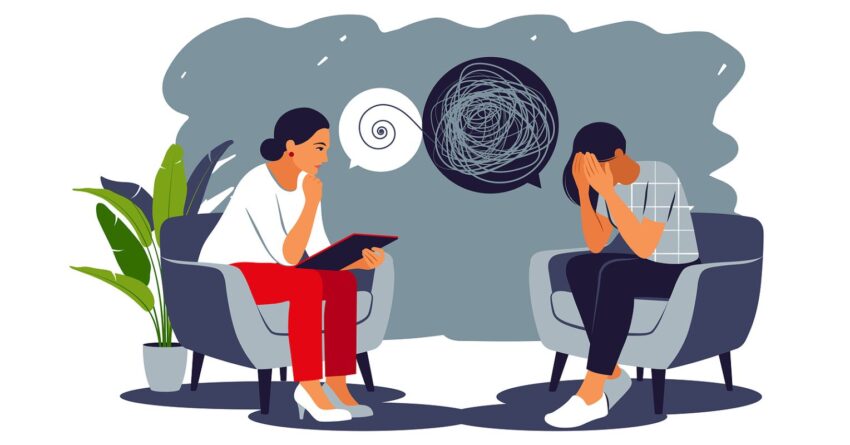In today’s fast-paced and ever-changing world, individuals often find themselves grappling with a host of stressors and life transitions. While most people navigate these challenges with resilience, some may develop an often-overlooked mental health condition known as adjustment disorder.
What Is Adjustment Disorder?
Adjustment disorder, sometimes referred to as situational depression, is a mental health condition that arises as a response to significant life changes or stressors. Stressors can include job loss, relationship issues, financial problems, or traumatic events. The hallmark of adjustment disorder is the emotional and behavioral distress it causes, which often exceeds what might be considered a typical reaction to such stressors.
The Silent Suffering
Many individuals with adjustment disorder go unnoticed, as their struggles often masquerade as everyday stress. They may appear to function normally, but beneath the surface, they grapple with a variety of emotional and psychological challenges. Left unaddressed, these issues can lead to more severe and long-term consequences.
How Can You Tell Whether You or Someone You Know Has an Adjustment Disorder?
Identifying adjustment disorder in yourself or someone you know can be crucial for seeking timely help and support. Adjustment disorder is characterized by an excessive emotional or behavioral response to a specific stressor or life change, and it typically occurs within three months of the triggering event. Here are some signs and symptoms to watch for:
- Excessive worry or anxiety: A disproportionate level of worry, anxiety, or stress in response to a specific event, such as job loss, relationship issues, or a traumatic experience.
- Mood swings: Frequent and intense mood swings that are out of character, such as frequent irritability, sadness, or anger, especially when such emotions persist long after the triggering event.
- Social withdrawal: A noticeable withdrawal from social activities, hobbies, or interactions with friends and family. The person may become increasingly isolated.
- Changes in behavior: Sudden changes in behavior, such as an increase in risky behaviors, substance abuse, or reckless actions that are inconsistent with the individual’s typical conduct.
- Difficulty concentrating: Struggles with concentration, focus, and decision-making, making it challenging to complete daily tasks or meet responsibilities.
- Physical symptoms: The development of physical symptoms, such as headaches, stomachaches, or other psychosomatic complaints, without any underlying medical cause.
- Sleep disturbances: Significant changes in sleep patterns, such as insomnia or excessive sleep, which can exacerbate feelings of exhaustion and emotional instability.
- Relationship issues: Difficulty in maintaining healthy relationships, with an increase in conflicts and a decrease in the ability to communicate effectively.
- Impairment in daily functioning: A noticeable decline in the ability to meet daily responsibilities, such as work, school, or household tasks.
- Duration and triggering event: Adjustment disorder symptoms are typically tied to a specific stressor or life event and should subside within six months after the stressor is removed. If symptoms persist beyond this time frame or are unrelated to a specific trigger, they may be indicative of another mental health condition.
The Long-Term Consequences of Untreated Adjustment Disorder
Untreated or undiagnosed adjustment disorder can have a profound impact on an individual’s mental health and overall well-being. Here are some of the long-term consequences to consider:
Chronic stress: Adjustment disorder often leads to persistent stress, which can result in physical health problems like heart disease, diabetes, and chronic pain.
Isolation: Individuals with adjustment disorder may withdraw from social interactions, leading to isolation and a lack of support. This can worsen their mental health over time.
Depression: In some cases, untreated adjustment disorder can progress into clinical depression, a more severe and chronic mental health condition.
Substance abuse: Coping with unresolved emotional issues can lead some individuals to turn to substances like drugs or alcohol, creating a new set of problems.
Relationship strain: Personal and professional relationships may suffer, as untreated adjustment disorder can lead to irritability, mood swings, and conflicts with loved ones and colleagues.
Loss of productivity: In the workplace, untreated adjustment disorder can result in decreased productivity and performance, which may lead to job loss.
Research
Many studies suggest that untreated or undiagnosed adjustment disorder can lead to long-term consequences such as increased symptoms of depression, anxiety, and stress, reduced decisional autonomy, and negative impacts on employment, education, and income.
The postponement of treatment for mental disorders has been associated with reduced levels of employment, lower educational achievements, and decreased income. Additionally, it has been found to be linked with higher rates of coexisting psychiatric and physical conditions, ultimately resulting in significant adverse health consequences for both affected individuals and society as a whole.
In addition, mental illness significantly reduces an individual’s earnings, and in some cases the effect lasts as long as 15 years.
These 2013 findings suggest that the average levels of negative affect that people experience and how they respond to seemingly minor events in their daily lives have long-term negative implications for their mental health.
The high number of lost working years from mental disorders has serious consequences for both the individual and for the wider society and economy.
Conclusion
Untreated or undiagnosed adjustment disorder is like a silent storm brewing within an individual’s life. At first, it may seem manageable, just a few raindrops of stress or anxiety that come and go. However, if left unaddressed, this seemingly small storm can evolve into a tempest that wreaks havoc on one’s mental health and overall well-being.
The consequences of untreated adjustment disorder are not to be underestimated. They can manifest in various ways, often insidiously creeping into every aspect of life. Individuals grappling with this condition may find themselves caught in a relentless cycle of despair, anxiety, and emotional turmoil. It affects their ability to function optimally, not just in their personal lives but also in their professional and social interactions.
Herein lies the transformative power of seeking help from a professional facility. By taking that crucial step to reach out, individuals are essentially opening the door to a brighter and more promising future.
